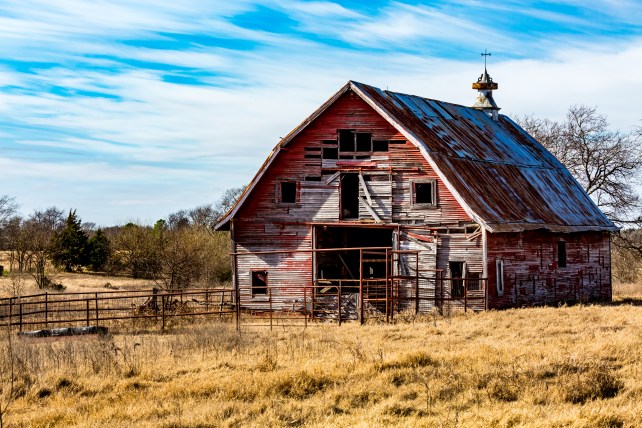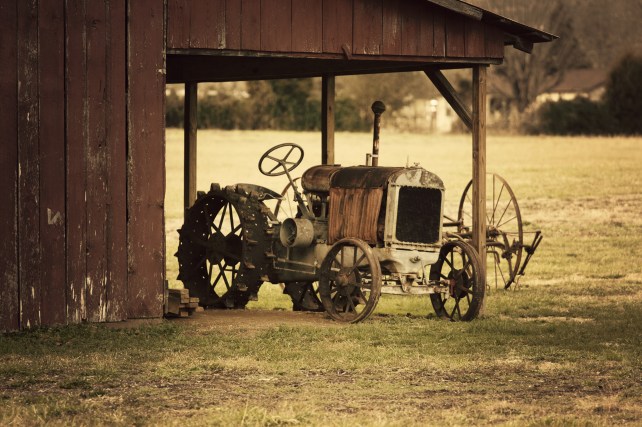
iStockPhoto
This content was written by Randi Druzin, and paid for by American Farmland Trust; it was not written by and does not necessarily reflect the views of Mother Jones' editorial staff. See our advertising guidelines to learn more.
Through her work at the Federation of Southern Cooperatives / Land Assistance Fund, Dãnia Davy meets many people whose lives have been disrupted and livelihoods threatened by an unstable form of land ownership called heirs’ property.
But one case sticks out in her mind – an elderly woman who lost her family’s farm in a court-ordered sale of the property. The sale was the result of a relative, who was also an heir, selling their interest to a timber company. The woman had been unable to secure enough money to keep the farm, which had been in her family for more than a century and included the home she had been living in since birth. She was devastated.
Unfortunately, that family’s story is not unique. Many others, especially those in lower-income and Black communities, have faced similar challenges.
“The reality is, many families haven’t been able to access their land wealth fully because of heirs’ property, and they face serious problems,” says Davy, who is the Federation’s director of land retention and advocacy. “That includes potential loss of their property.”
When the owner of a property dies without a valid will, ownership of the property flows equally to all that person’s heirs, and they become tenants in common. They have the right to use the property, but they lack a clear title. Ownership remains in this format unless all heirs settle the estate and title issues. Eventually, there could be dozens or hundreds of co-tenants.
This land ownership format can be the source of many problems. Because the heirs lack the title confirming their status as clear owners, they might struggle to secure disaster assistance in the wake of a major storm or to use the property as collateral for financing. Also, they have difficulty accessing many U.S. Department of Agriculture programs. In the past, they couldn’t access these programs at all.

Even worse, when all the heirs can’t agree on what to do with the property, it may end up being sold through a forced partition sale. This can happen, for example, when one heir sells their interest to a non-family member. As has happened on many occasions, this legal loophole could allow a real estate speculator to force a public sale of the entire property and then purchase it for a fraction of the market value. This process, which can unfold within weeks or days, severely depletes a family’s wealth, while forcing them from the land—and likely housing—that had been in their family for generations.
This scenario is a common one because, according to Davy, there are often family members who don’t live anywhere near the property in question and have no emotional connection to it.
Black families disproportionately affected
Heirs’ property challenges are experienced by marginalized and low-income communities, particularly Hispanic populations in the southwest, Indigenous families on reservations, and low-income families in Appalachia.
But the problem is most prevalent among Black families in the South, where heirs’ property accounts for about one-third of all land owned by Black families. This problem can be partially traced back to 1862, when the Homestead Act was passed. The legislation granted Americans 160-acre plots of public land for the price of a small filing fee. In addition to fostering Western expansion, it also allowed immigrants, women, and former slaves to become landowners.
Black landowners who died in the early 20th century often left their property to heirs without a will because they couldn’t afford the legal services needed to formalize the transaction, or because they were denied access to the legal system altogether. In some cases, these landowners avoided formal wills and titles because they didn’t trust local and state governments. After all, these entities had a long history of mistreating Black people. As a result, many properties were passed down from one generation to the next with original landowners still listed on the deeds.
Due in part to pitfalls of the heirs’ property framework—along with other systemic injustices such as racism, loan denials, and under-representation in agriculture—Black families now own much less property than they did a hundred years ago. In the last century, Black farmland ownership has declined by about 12 million acres. The federal government has identified heirs’ property as the leading cause of involuntary land loss among Black Americans.
It can take years and cost tens of thousands of dollars to resolve land ownership issues. Because the process often involves complex tasks such as performing land surveys, researching property records, and reviewing reams of other documents, the services of a lawyer are needed—and that presents additional challenges.
There aren’t many lawyers who specialize in heirs’ property cases, in part because the cases are often so complicated many lawyers view them as potential quagmires and steer clear. Many of the private lawyers who do work on these cases charge fees that are prohibitive.
“Many Black land owners don’t trust the process,” says Joe Hamilton, who manages a tree farm in the South on property originally owned by his great-grandfather, a freed slave. “The reason that heirs’ property is so prevalent is we have been taken advantage of.”
Steps are being taken to fix problem
The problem has caught the attention of government agencies and various organizations, some of which are taking steps to fix it.
The 2018 Farm Bill authorized the use of alternative documentation for heirs’ property operators to establish a farm number, which is required for many U.S. Department of Agriculture programs, including lending, conservation funding, and disaster relief.
The Farm Bill also authorized the Heirs’ Property Relending Program (HPRP), which enables some cooperatives, credit unions, and other entities to lend money to property owners trying to resolve ownership and succession issues on shared farmland. Heirs can apply to those entities for loans. The federal government is earmarking $67 million for this initiative.

State-level changes are happening, too. Since 2011, twenty-one states have enacted the Uniform Partition of Heirs’ Property Act, a draft bill being pitched to state legislatures by the Uniform Law Commission, a non-profit organization. The legislation changes the procedure for lawsuits involving co-owners of property. Under the UPHPA, the defendant in a lawsuit involving heirs can buy out the plaintiff’s interest in the property rather than having to purchase the entire property. Other safeguards are put in place, too. In effect, the legislation expands heirs’ rights to their property and protects against the most egregious forced sales.
Some organizations also offer help. For example, the Center for Heirs’ Property Preservation in South Carolina guides landowners through the process of proving ownership, planning estates, and learning how to manage land to benefit their families. Working in Virginia and North Carolina, the Black Family Land Trust also supports landowners in securing and conserving their property.
The Federation of Southern Cooperatives / Land Assistance Fund provides land retention support and assistance to farmers and landowners throughout the South, most of whom are Black. The organization estimates that most Black-owned heirs’ property land will be lost through partition sales, so it is encouraging more states to enact the Uniform Partition of Heirs’ Property Act.
The road ahead – what needs to be done still
Despite the progress, challenges remain for heirs’ property owners. For example, because they are typically low-income individuals, it can be difficult for them to repay loans. For that reason, some organizations, including American Farmland Trust (AFT), are suggesting that the HPRP program be changed to a grant or cost-share format,
“The most important work we can do now is to support trusted local and regional organizations in providing education, outreach, and support to heirs’ property owners,” says Emily Liss, AFT’s federal policy analyst and communications specialist. “The goal should be to help people better understand the unique challenges of heirs’ property ownership, and to ensure that they have access to the legal counsel and funding necessary to keep the land in their family for generations to come.”
Davy feels that local and state governments can do more to resolve the problems associated with heirs’ property.
“If critical cooperative enabling legislation was passed in the South, I think these families would have the option of cooperative land ownership models, both within individual families or groups of families that have property close together,” she says, explaining that these models could consolidate interests and establish clear decision-making protocols within a family.

“In terms of the bigger picture, we need state laws that are more responsive to the reality of people who own heirs’ property. It’s very difficult to get one hundred percent agreement among any group of heirs,” Davy says, adding that states need to loosen consensus requirements.
“Dãnia and the Federation, along with other organizations like the Black Family Land Trust, are experts on this issue. They’ve helped so many families,” says Brooks Lamb, Land Protection and Access Specialist at AFT and author of the forthcoming book Love for the Land: Lessons from Farmers Who Persist in Place (Yale Univ. Press). “Their work to address racial injustice, economic inequity, and heirs’ property has been inspiring and illuminating for many in the agricultural and environmental spaces, including us at American Farmland Trust.
“We can’t fulfill our mission at AFT—saving the land that sustains us by protecting farmland, promoting environmentally sound farming practices, and keeping farmers on the land—without focusing more on injustices, like heirs’ property exploitation,” he says. “These inequities have fueled land dispossession and economic struggle for generations.”